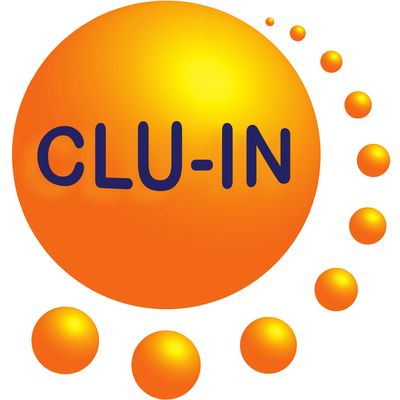Since 1998, The Contaminated Site Clean-Up Information (CLU-IN) website has presented Internet Seminars covering a wide variety of technical topics related to hazardous waste characterization, monitoring, and remediation. For each seminar topic, we have selected the highest-quality offering for placement in our archives. Beginning in May 2005, we began offering these archives via podcast, and this feed contains all seminars archived in the last 6 months. For a complete list of seminars archived since 2000 and videos of selected seminars archived since 2012, please visit http://clu-in.org/live/archive/. Our Rehabilitation Act Notice for reasonable accommodation is available at http://clu-in.org/training/accommodation.cfm. CLU-IN was developed by the U.S. Environmental Protection Agency (EPA) but is intended as a forum for all waste remediation stakeholders. For more information and to view upcoming live offerings, please visit http://clu-in.org/live/. For a complete list of RSS feeds available on CLU-IN, please visit http://clu-in.org/rss/about/.
http://www.clu-in.org/live/archive
Gesamtlänge aller Episoden: 14 days 9 hours 4 minutes
Audio for "Integrated DNAPL Site Strategy," Jan 7, 2016
Sites contaminated by chlorinated solvents present a daunting environmental challenge, especially at sites with dense nonaqueous phase liquid (DNAPL) still present. Restoring sites contaminated by chlorinated solvents to typical regulatory criteria (low parts-per-billion concentrations) within a generation (~20 years) has proven exceptionally difficult, although there have been successes...
Audio for "Integrated DNAPL Site Characterization," Dec 9, 2015
Sites contaminated with dense nonaqueous phase liquids (DNAPLs) and DNAPL mixtures present significant environmental challenges. Despite the decades spent on characterizing and attempting to remediate DNAPL sites, substantial risk remains...
Audio for "Biochemical Reactors for Treating Mining Influenced Water," Dec 7, 2015
Mining influenced water (MIW) includes aqueous wastes generated by ore extraction and processing, as well as mine drainage and tailings runoff. MIW handling, storage, and disposal is a major environmental problem in mining districts throughout the U.S and around the world. Biochemical reactors (BCRs) are engineered treatment systems that use an organic substrate to drive microbial and chemical reactions to reduce concentrations of metals, acidity, and sulfate in MIWs...
Audio for "Screening, Testing, and Application of Residuals and Byproducts for Remediation," Dec 2, 2015
This webinar will discuss the use of coal combustion products for soil remediation at mining sites, as well as discuss recent research on screening and testing residuals, such as waste lime, gypsum, and paper mill sludge, for application on contaminated lands. Presentations will include case study data and findings that are supported by publications available from the presenter and collaborators' website www.landrehab.org...
Audio for "SRP Funding Opportunities Web Seminar," Dec 1, 2015
The SRP will be holding a web seminar to provide information about the new "Superfund Hazardous Substance Research and Training Program (P42)" funding opportunity, RFA-ES-15-019. Focus will be on the multi-project center grant announcement, including an emphasis on changes compared to previous solicitations. Participants will have an opportunity to ask questions. To view this archive online or download the slides associated with this seminar, please visit http://www.clu-in...
Audio for "RE-Powering's Screening Tools," Nov 18, 2015
EPA's RE-Powering America's Land Initiative encourages renewable energy development on current and formerly contaminated lands, landfills and mine sites. The Initiative has recently upgraded its Google Earth Mapper and released its electronic decision tree tool to allow stakeholders the ability to identify and explore sites for solar or wind potential. The Mapper uses Google Earth and displays and screens over 80,000 EPA- and state-tracked sites, comprising over 43 million acres...
Audio for "Implementing Greener Cleanups through ASTM's Standard Guide (E2893-13)," Nov 17, 2015
The U.S. EPA and other organizations encourage use of the ASTM International Standard Guide for Greener Cleanups (E2893-13), which offers a step-wise approach for reducing the environmental footprint of site cleanup activities. This two-hour webinar sponsored by the U.S. EPA will provide participants with an overview of the Standard, show how the Standard can inform project decisions, and describe experiences in using the Standard at sites across the U.S. under state or federal cleanup programs...
Audio for "Soil Sampling and Decision Making Using Incremental Sampling Methodology - Part 2," Nov 10, 2015
When sampling soil at potentially contaminated sites, the goal is collecting representative samples which will lead to quality decisions. Unfortunately traditional soil sampling methods don't always provide the accurate, reproducible, and defensible data needed. Incremental Sampling Methodology (ISM) can help with this soil sampling challenge...
Audio for "Integrating Data from Multidisciplinary Research, Session III - Establishing Infrastructure for Data Integration," Nov 4, 2015
This webinar series explores challenges and opportunities for integrating datasets to solve complex environmental health problems. In the third session, speakers include data science experts who are developing tools through NIH-funded grants to establish infrastructure to coordinate data and develop sophisticated approaches to utilize big data to advance our understanding of human health and disease. Susan Teitelbaum, Ph.D...
Audio for "Soil Sampling and Decision Making Using Incremental Sampling Methodology - Part 1," Nov 3, 2015
When sampling soil at potentially contaminated sites, the goal is collecting representative samples which will lead to quality decisions. Unfortunately traditional soil sampling methods don't always provide the accurate, reproducible, and defensible data needed. Incremental Sampling Methodology (ISM) can help with this soil sampling challenge...
